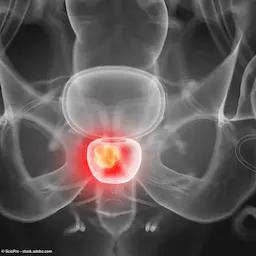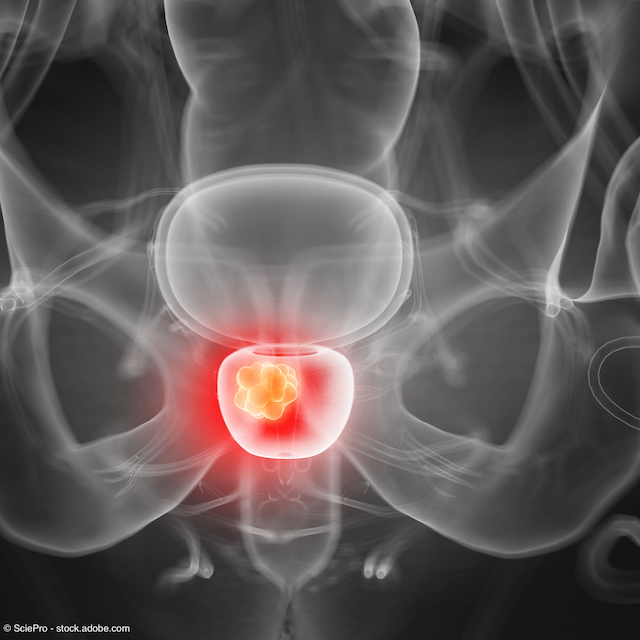Opinion
Video
Amar Kishan, MD, shares 2-year data on MRI-guided vs CT-guided SBRT
Author(s):
"Physician scored GU toxicity grade 2 or greater at 2 years was 51% with the CT-guided and 27% with the MRI-guided," says Amar U. Kishan, MD.
- Chapters
- descriptions off, selected
- captions settings, opens captions settings dialog
- captions off, selected
This is a modal window.
Beginning of dialog window. Escape will cancel and close the window.
End of dialog window.
This is a modal window. This modal can be closed by pressing the Escape key or activating the close button.
In this video, Amar U. Kishan, MD, shares the initial and 2-year outcomes from the MIRAGE trial (NCT04384770), which compared the use of aggressive margin reduction with MRI-guided SBRT to standard CT-guided SBRT. Kishan is a professor and executive vice chair of radiation oncology at the University of California, Los Angeles.
Video Transcript:
The primary end point was short-term toxicity. That was known several years ago at this point. About 2 years ago, we published our primary end point analysis in JAMA Oncology, which found a significant reduction in acute urinary toxicity and acute bowel toxicity with the use of the MRI to reduce margins. Essentially, we reduced acute GU toxicity, grade 2 or greater, from 43.4% to 24.4% and acute GI grade 2 or greater toxicity went from 10.5% to 0% in the MRI-guided arm. We also saw some benefits in patient-reported outcomes. So urinary toxicity, specifically, patients that had a large increase in their IPSS score, which is a marker of lower urinary tract symptoms, the proportion of patients that had a big increase in that was less, and the proportion of patients that had a significant decrease in EPIC quality of life bowel metrics was significantly less as well. That was the acute toxicity, the 3-month end point. This current manuscript, which came out a couple of months ago now in November, was looking at the 2-year patient reported outcomes, so touching a little bit more on one of the comments and criticisms of the earlier report, which was that it was just this short-term toxicity. Now we're looking at longer term toxicity. This was a pre-specified secondary analysis. We had always wanted to look at this, we just didn't power the trial to be able to look at these longer-term end points.
We looked at physician scored toxicity as well. We looked at something called cumulative incidence, which is if a patient has the toxicity at some point, that's counted as an event. Essentially, physician scored GU toxicity grade 2 or greater at 2 years now was 51% with the CT-guided and 27% with the MRI-guided, so a significant reduction there. And GI toxicity grade 2 or greater was 9.4% with CT-guided, and down to 1.4% with the MRI-guided, so significant benefits in late physician score toxicity.
We also looked at patient reported outcomes, as I mentioned. When looking at EPIC bowel domain scores, we looked at the odds of experiencing what's called 2x the minimal clinically [important] difference (MCID), which is well established in patient reported outcomes literature to be a clinically significant decrease in function if you have 2 times the MCID. We saw that the odds of having that were about 60% lower with the MRI-guided radiation. We also looked at this interval at sexual health outcomes; there's something called the SHIM score, the sexual health inventory for men. In that subgroup of patients who had evaluable scores for this—so these are the patients that didn't have androgen deprivation therapy or had a short course androgen deprivation therapy—there was an improvement as well. There was about a 63% decreased odds of a significant decrease in sexual functioning by patient reported outcomes in the patients who had the MRI- guided SBRT.
This transcript was AI generated and edited by human editors for clarity.










Stent omission after ureteroscopy is safe, improves patient-reported outcomes
Intervention to increase fluid intake does not reduce recurrent stones
Physical function and frailty measures offer distinct insights in patients with bladder cancer
FDA to host advisory committee meeting on UGN-102 for NMIBC
2 Commerce Drive
Cranbury, NJ 08512
All rights reserved.





